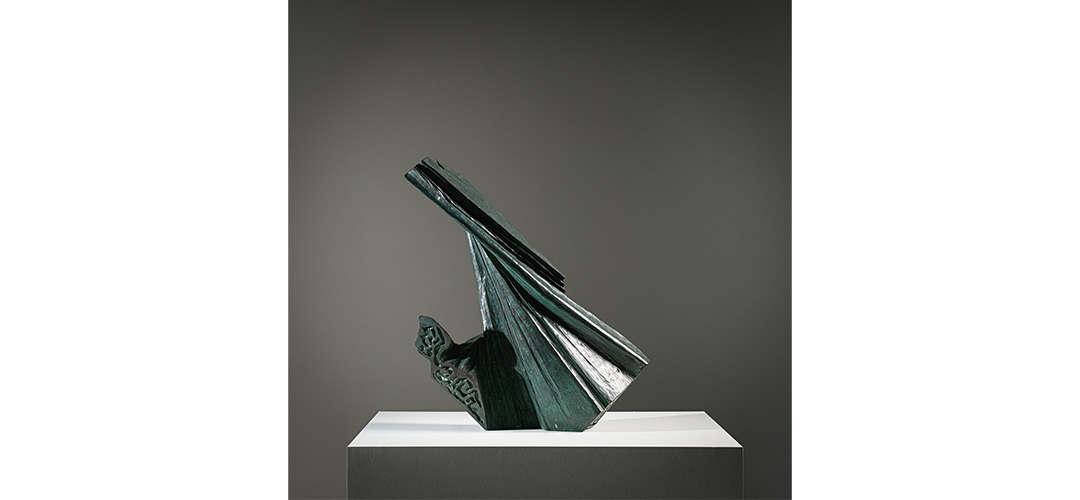Yuyu YANG
Moving Sleeve
Bronze
62 x 25 x 75 cm
1969
Yuyu Yang, also known as Yang Ying-feng, was born in Yilan, Taiwan, in 1926 and passed away in Hsinchu, Taiwan, in 1997. He studied at the Tokyo School of Fine Arts (now Tokyo University of the Arts) in Japan, the Fine Arts Department of Fu Jen University in Beijing, and the Art Department of National Taiwan Normal University. In the 1960s, he pursued further studies in sculpture at the National University of Rome and the Roman Mint School in Italy. Apart from teaching at universities in Taiwan, Yang exhibited both domestically and internationally, including his renowned landscape sculpture Advent of the Phoenix at Expo ’70 in Osaka, Japan. Over his lifetime, Yang created more than 2,500 pieces, encompassing comics, prints, sculptures, laser art, landscape sculptures, and architectural planning, earning numerous accolades. He is one of the most representative and influential post-war Taiwanese artists.
Yang’s love for nature stemmed from his childhood in the beautiful landscapes of Yilan, where he was immersed in natural surroundings from a young age, fostering a deep passion for art in clay sculpture and paper cutting. His educational journey in architecture at the Tokyo School of Fine Arts and his three-year stay in Italy provided him with experiences that led to a realization of the differences between Eastern and Western cultures, aesthetics, and philosophies. He gradually moved away from the excessive use and development of Western technology and materialism, embracing the Chinese philosophical concept of “unity of heaven and humanity,” which advocates for harmonious coexistence between humans (microcosm) and the natural environment (macrocosm).
Upon returning to Taiwan after three years in Italy, Yang was invited by the director of the Hualien Veterans Marble Factory to serve as a consultant, becoming the first artist in Taiwan to integrate culture into industry. During his time in Hualien, Yang was deeply impressed by the grandeur and majesty of Taroko Gorge. His experiences and observations in Europe, combined with Taiwan’s awe-inspiring natural scenery, inspired his “Taroko Landscape Series,” which began in 1969. At that time, polystyrene, a new industrial material and byproduct of oil refining, caught Yang’s attention for its sculptural potential. He used heated fine iron wire to cut and shape the intricate forms of mountain rocks and cliffs, engraving ancient cloud patterns on partial surfaces.
The works on display include Moving Sleeve, which combines the ruggedness of mountain formations with the elegance of the flowing sleeves from Peking opera. The piece evokes the dynamic beauty of fluttering wide sleeves, exuding confidence and grandeur. Yang’s “Taroko Landscape Series” spanned approximately ten years, capturing his experiences and feelings towards his homeland’s scenery through a blend of emotional and rational thought. These scenery sculptures are rare in art history, as they not only recreate the topography and showcase intricate carving techniques but also express the spirit and rhythm of nature.

